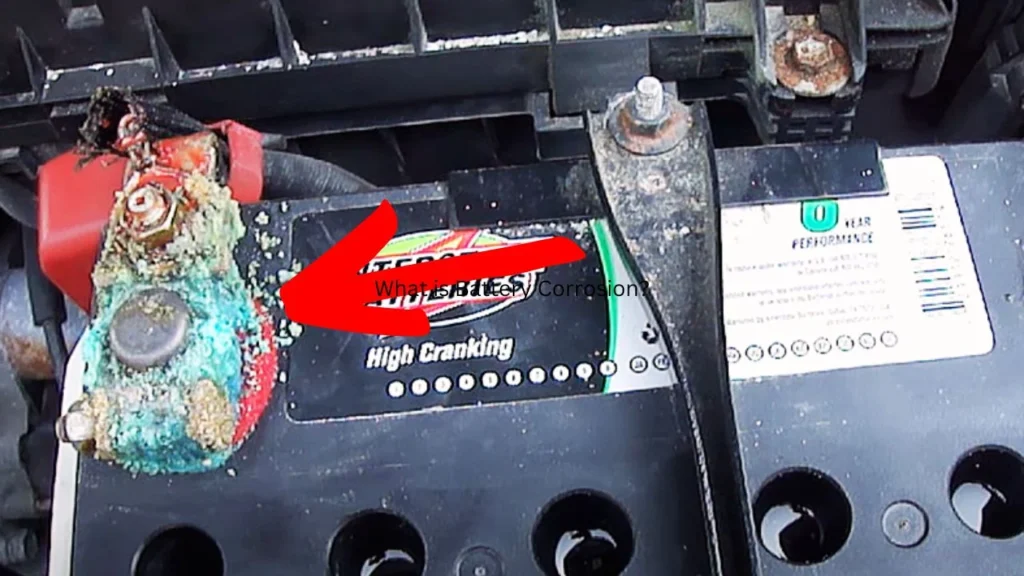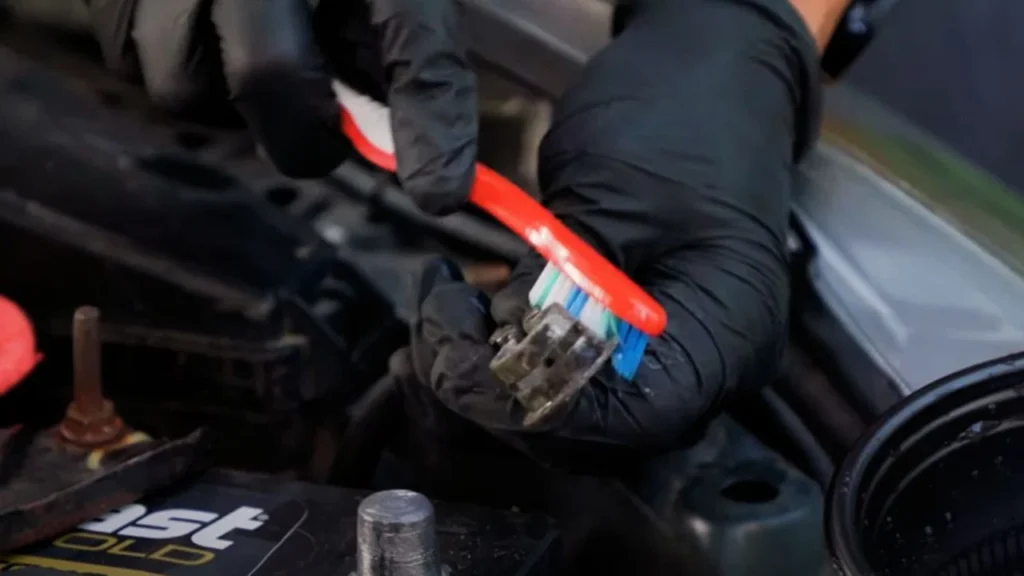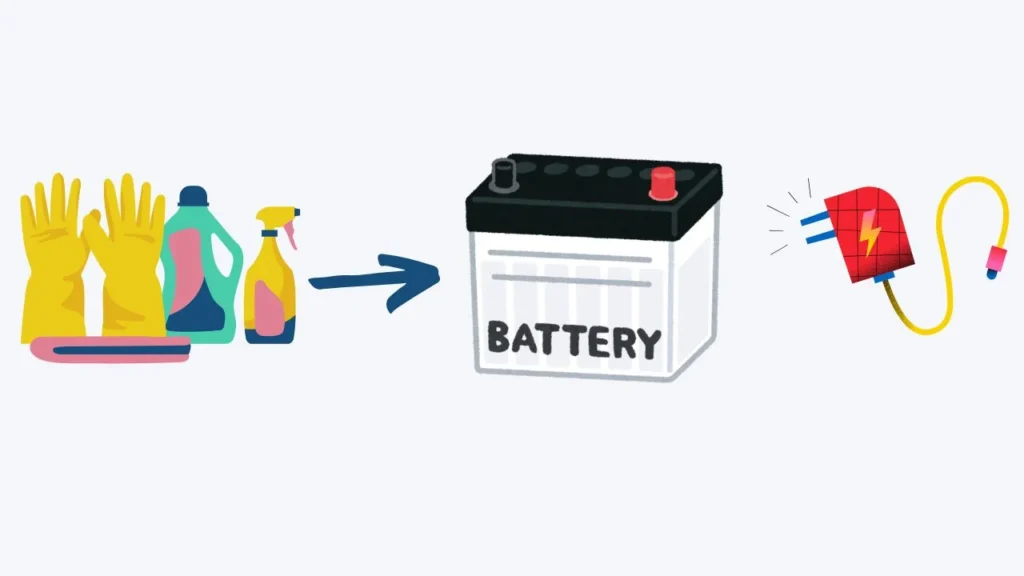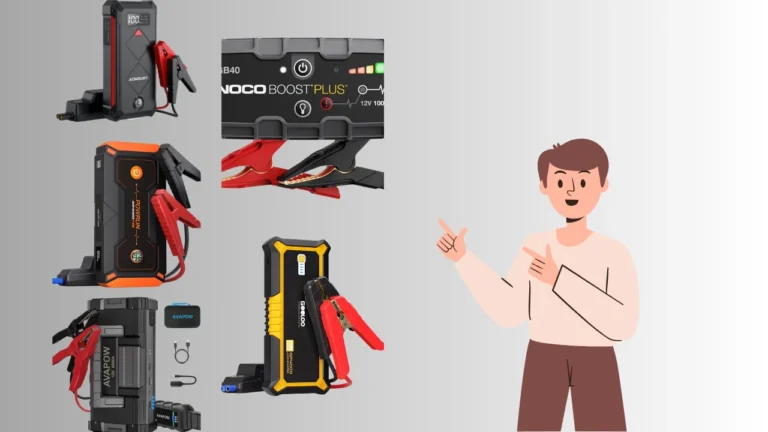Jump-starting a car can be a simple solution when you find yourself stuck with a dead battery. However, things become more complicated if the battery is corroded. Corrosion is a common issue that affects car batteries, hindering their ability to function properly and making it challenging to get the car started even with a jump. So, can you jump start a corroded battery?
I will provide you with all the information you need to determine whether you can jump-start a corroded battery, how to safely do so, and the best practices for ensuring your battery stays in good condition. Learn the step-by-step process on how to jump-start a diesel truck with 2 batteries, ensuring you avoid potential mistakes that could damage your vehicle or batteries.
What is Battery Corrosion?
Battery corrosion occurs when a powdery white, green, or bluish substance forms on the battery terminals. This typically results from a chemical reaction between the battery’s sulfuric acid and the metal terminals, which is accelerated by factors like battery age, extreme temperatures, and overcharging.

Over time, this buildup can impede the flow of electricity between the battery and your car’s electrical components, leading to poor battery performance and difficulties starting the vehicle. Discover practical advice on how to jumpstart a refrigerator compressor, a useful guide for when your fridge stops cooling properly.
Effects of Corrosion on Battery Performance
The presence of corrosion can significantly impact your car’s ability to start. Corroded battery terminals restrict the electrical current, making it difficult for the battery to provide the necessary power to start the engine. This may lead to multiple symptoms, such as:
- Difficulty starting the vehicle: The car might crank weakly or not at all.
- Poor electrical performance: Issues with other electrical components like lights, power windows, or even the infotainment system.
- Battery drain: Corrosion can also cause a drain on the battery, reducing its overall lifespan and efficiency.
Can You Jump Start a Corroded Battery?
So, can you jump start a corroded battery? The short answer is yes, you can jump-start a car with a corroded battery, but it requires some preparation to ensure success. Corroded terminals prevent efficient electricity transfer, which means simply connecting jumper cables might not be enough.
Before attempting to jump-start a corroded battery, you should clean the battery terminals to improve electrical contact and increase your chances of successfully jump-starting the car. Explore whether it is bad to keep jump-starting your car battery, including the long-term effects it may have on your vehicle’s performance.
Why Cleaning Battery Terminals Is Important?
Cleaning the terminals helps remove the corrosion buildup, which is essential for establishing a proper electrical connection. Without cleaning, the corrosion could block the necessary current flow, rendering the jump start unsuccessful.
Once the terminals are cleaned, the connection is more secure, and the electrical power from the donor battery can effectively reach the dead battery. Learn how to safely jump-start a box truck with this guide on jump-starting a box truck, covering essential tools and step-by-step instructions.
Step-by-Step Guide: How to Clean Battery Terminals
To jump-start a corroded battery, follow these cleaning steps first:

- Safety First: Always wear safety gloves and eye protection when dealing with battery corrosion. The buildup can contain sulfuric acid, which is harmful to your skin and eyes.
- Disconnect the Battery Cables: Begin by disconnecting the negative (black) terminal, followed by the positive (red) terminal. This order is essential to prevent accidental electrical shorts.
- Create a Cleaning Solution: Mix one tablespoon of baking soda with one cup of water to create a mild abrasive solution that can neutralize the acid in the corrosion.
- Apply the Solution: Use an old toothbrush or wire brush to apply the baking soda solution to the corroded terminals. The baking soda will react with the corrosion, making it easier to remove.
- Scrub the Terminals: Use the wire brush to gently scrub the terminals until all visible corrosion is removed. Ensure all sides of the terminals are clean to establish a solid connection.
- Rinse and Dry: Rinse the terminals with clean water and dry them thoroughly with a clean cloth. It is crucial to ensure the terminals are completely dry before reconnecting the battery to prevent future corrosion.
- Reconnect the Battery: Reconnect the positive (red) terminal first, followed by the negative (black) terminal, and ensure they are tight to guarantee proper contact.
To further protect against future corrosion, you can apply a thin layer of petroleum jelly or terminal grease to the cleaned terminals. This creates a barrier against moisture and acid, helping to prevent new corrosion from forming.
Jump Starting a Corroded Battery: Step-by-Step Procedure
Once you’ve cleaned the terminals, you can proceed with jump-starting the battery. Here’s how:

- Position the Vehicles: Park the car with the working battery (donor vehicle) close to the car with the dead battery. Ensure both cars are in Park or Neutral and turned off. Open both hoods.
- Connect the Jumper Cables:
- Connect one end of the red (positive) cable to the positive terminal of the dead battery.
- Connect the other end of the red cable to the positive terminal of the good battery.
- Connect one end of the black (negative) cable to the negative terminal of the good battery.
- Connect the other end of the black cable to an unpainted metal surface of the dead vehicle, away from the battery. This serves as a grounding point and reduces the risk of sparks near the battery.
- Start the Donor Vehicle: Start the vehicle with the working battery and let it run for a few minutes to allow the dead battery to gain some charge.
- Attempt to Start the Dead Vehicle: Try to start the car with the dead battery. If it doesn’t start, allow a few more minutes for charging and try again.
- Disconnect the Jumper Cables: Once the dead vehicle starts, disconnect the jumper cables in the reverse order:
- Start by removing the black cable from the dead car, then the black cable from the donor car.
- Remove the red cable from the donor car, and finally, the red cable from the dead car.
- Make sure the cables do not touch each other or any metal surfaces during disconnection.
- Keep the Engine Running: Let the previously dead vehicle run for at least 15 minutes to allow the alternator to charge the battery fully and reduce the likelihood of the battery dying again shortly after.
Tips for Jump Starting a Corroded Battery
- Regular Maintenance: Regularly inspect and clean your battery terminals to prevent corrosion buildup. Doing so will reduce the chances of needing a jump start in the first place.
- Use a Proper Battery Charger: If you frequently find yourself needing to jump-start your battery, consider using a battery charger to keep your battery charged. It’s a more convenient and safe alternative to constantly jump-starting.
- Replace an Old Battery: If your battery is old and prone to corrosion, it may be time for a replacement. A new battery will not only be more reliable but also improve the overall health of your car’s electrical system.

When Not to Jump Start a Corroded Battery?
Safety concerns should be a priority when dealing with corroded or damaged batteries. If the battery is cracked, leaking, or visibly damaged, do not attempt to jump-start it. A leaking battery can be dangerous, and jump-starting could cause further damage or even lead to an explosion in extreme cases.

If you suspect that your battery is beyond simple corrosion, it’s best to seek professional assistance. Discover the steps for jump-starting a Mini Cooper efficiently and avoid damaging your car’s sensitive electronics.
Conclusion
Jump-starting a corroded battery is possible, but preparation is key. Ensuring that your battery terminals are clean can greatly increase the likelihood of a successful jump start. Battery corrosion impedes the flow of electricity, which can affect not only your ability to start the car but also the performance of other electrical systems in your vehicle.
By following the steps outlined above and taking preventive measures, you can manage and mitigate battery corrosion issues effectively. Remember that regular maintenance is crucial for extending the lifespan of your battery and preventing the inconvenience of a dead car when you need it most. Understand the process and precautions when jump-starting a 24V system with a 12V battery to prevent system overloads.
So next time you’re faced with a corroded battery, don’t panic. With a little bit of cleaning and caution, you can get back on the road with confidence. Hope so, now you know the answer to: Can you jump start a corroded battery?
Ali is a tech enthusiast and automotive aficionado, passionate about sharing insights on the latest innovations and industry trends.





